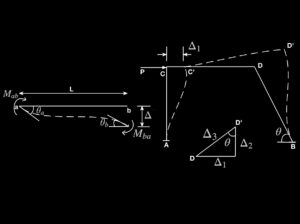 An outline of classical structural analysis, which covers many different analytical methods, is located here.
An outline of classical structural analysis, which covers many different analytical methods, is located here.
The teachings of Mihailo Trifunac at the University of Southern California were vital to the completion of this outline.
The textbook “Elementary Theory of Structures,” by Hsieh and Mau, is also highly recommended.
Classical structural analysis is concerned with methods for finding axial forces, shear forces, and internal moments, within structures, when the applied external forces are known. Whereas “statics” deals with the equations of static equilibrium, which can be used to find internal forces (axial, shear, and moments) for statically determinate structures, classical structural analysis can handle more complicated structures that are statically indeterminate. The equations of static equilibrium will still be important, but now we also need to consider the properties of the materials that the structure is composed of.
The Young’s Modulus of the material will be important, for example. We will also need to know something about the geometry of the cross-sections of members, such as the cross-sectional area and moment of inertia. Thus, “statics” as well as “mechanics of materials” are topics that are prerequisites for this topic: “classical structural analysis.” There are other kinds of structural analysis, such as “finite element analysis,” but such methods use algorithms that are better implemented using a computer. Classical structural analysis, on the other hand, has been around for a long time and is meant to be performed by hand. In other words, the “classical” methods of structural analysis, herein, are analytical methods rather than computational methods. We are still considering only elastic behavior.
